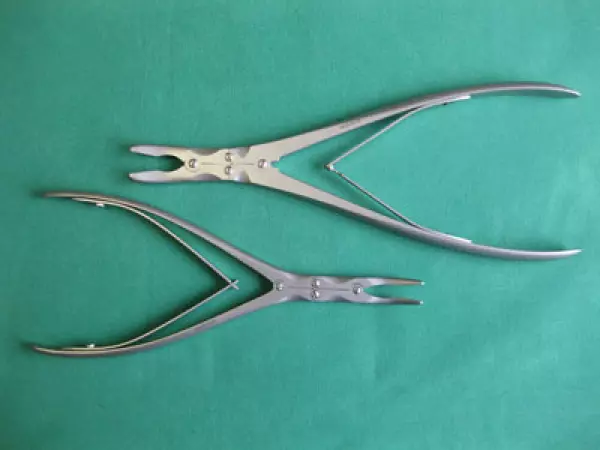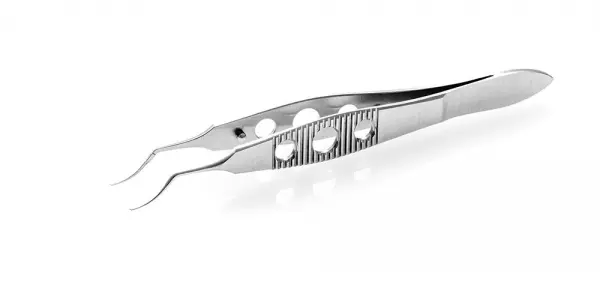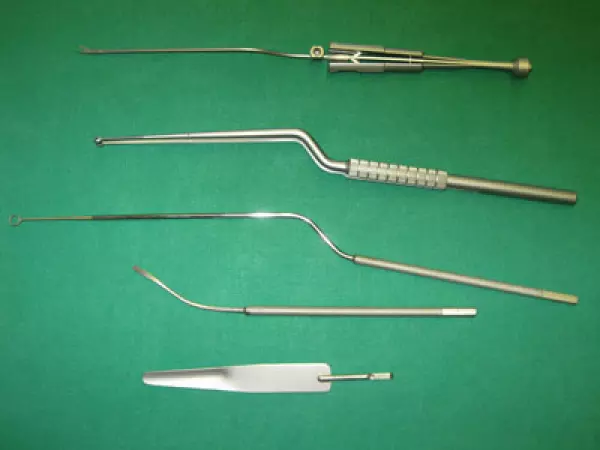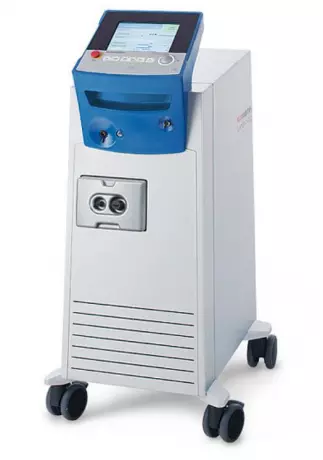
Cutting spring-handled instruments
MICRO INSTRUMENTS - 100% MADE IN GERMANY Below you will find an excerpt from our product portfoli...
Portal and digital medical technology fair of the largest MedTech cluster in Germany

Cutting spring-handled instruments
MICRO INSTRUMENTS - 100% MADE IN GERMANY Below you will find an excerpt from our product portfoli...

Repair service for standard surgical instruments
We repair MIS instruments from all well-known manufacturers , drive systems such as drilling hoses,...

Surgical Ophthalmic Instruments - Tweezers...
EYE SURGERY Modern eye treatment abounds with innovations in diagnostics and therapy. Right from...

Standard instruments and specialist instruments...
The product portfolio covers our complete range with approximately 20,000 different standard instrum...

Eye tonometer according to Prof. Schioetz
Our Schioetz (Schiotz, Schiötz) tonometers are due to many years of experience made as a speci...

Repair service and maintenance of micro instruments
We repair MIS instruments from all well-known manufacturers , drive systems such as drilling hoses,...

Surgical laser systems In the early 1990s, we started developing the first laser surgery devices....

If you've ever wondered what eye surgery involves, read on. This new procedure combines laser and microsurgical techniques. With this technique, surgeons can correct the problem of your vision, without damaging the retina or causing pain. The surgeon will use a small air bubble to push the retina back into place, but the bubble will disappear over time. Another technique, known as a vitrectomy, uses a suction tool to remove most of the vitreous, the gel-like substance that fills the eye. The surgery will leave a scar and allow the cornea to heal naturally.
The postoperative recovery from eye surgery will result in blurred vision, but it is usually short-lived. Most patients recover their vision quickly. They will be given pain medication and eyedrops, and asked to wear protective glasses or sunglasses overnight. The recovery time after cataract surgery depends on the type of procedure and how healthy the eye is before the surgery. However, the surgery should not prevent you from wearing makeup or swimming. If you're pregnant, talk to your doctor about this before the operation.
After eye surgery, you will likely experience some blurred vision, but you should expect to experience little to no pain. Most patients return to normal within two to three days. If you're undergoing cataract surgery, you will have a few days to adjust to dim light. If you're driving or going somewhere with a lot of bright lights, your doctor may recommend wearing a lens shield at night. Your eye should heal in two to three months. You can also wear makeup and take a dip in a hot tub, but be sure to follow your doctor's recommendations.
Depending on the type of eye surgery, you may need to undergo general anesthesia. This will keep you unconscious throughout the entire procedure. In most cases, however, you'll receive a combination of monitored sedation and a complementary regional anesthesia block. The former will provide you with pain relief while the latter will prevent you from feeling the pain during the procedure. During a general anesthesia, you will be awake, but you will still feel some discomfort while the surgery is being performed.
After eye surgery, you'll be able to resume your normal activities. Some people experience vision loss after surgery, but it is normal. Many of these people have normal vision and don't need to have any surgery at all. But if you don't feel comfortable with undergoing any type of procedure, you should consider consulting with an eye care specialist. You can also ask about the risks of laser and other procedures. Your surgeon will let you know what to expect from your operation.
The level of sedation you require will depend on the specific procedure. You will either be sedated or awake during the procedure, depending on the severity of your eye conditions. If you are having a cataract surgery, you'll need to be aware of your surroundings to avoid any potential complications. This is because a cataract can cause you to lose vision. Fortunately, a corneal flap can be placed inside the eye to correct a vision issue.
Other types of eye surgery can restore your vision. The laser-assisted surgery, called LASIK, can correct refractive errors. In addition to cataracts, LASIK can correct nearsightedness, farsightedness, and blurry vision. When a corneal keratoplasty is needed, the surgeon will first need to make a flap that covers the cornea. This flap will then be replaced after the laser surgery.
A corneal transplant is a common procedure that involves removing a portion of the eye. The doctor uses a special tool to keep the eye open. After he has made the cut, the doctor will then replace the affected part of the cornea with healthy donor tissue. In severe cases, glaucoma implant surgery will be necessary. This surgery will insert a small tube into the white part of the eye to help the extra fluid drain out. A trabeculectomy will create a tiny opening in the top of the eyelid.
A corneal transplant is the most common type of eye surgery. It involves reshaping the cornea. It may result in a clicking noise or a burning smell. Once the flap is closed, the patient will be able to drive home the same day. After this procedure, they'll be asleep, but they'll be able to see and hear a few minutes later. Some patients may require a second procedure, which is similar to orbital decompression.
Become a digital exhibitor yourself in the online portal of the largest and best-known MedTech cluster region in Germany and inform the world of medical technology about your products and services as well as about news, events and career opportunities.
With an attractive online profile, we will help you to present yourself professionally on our portal as well as on Google and on social media.